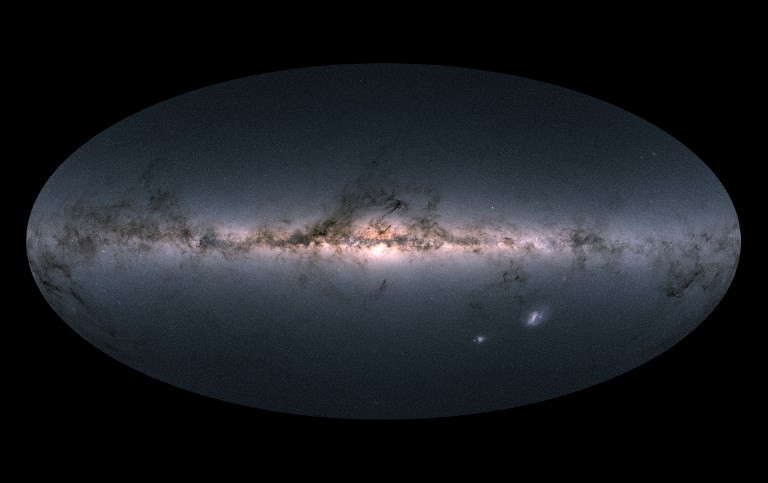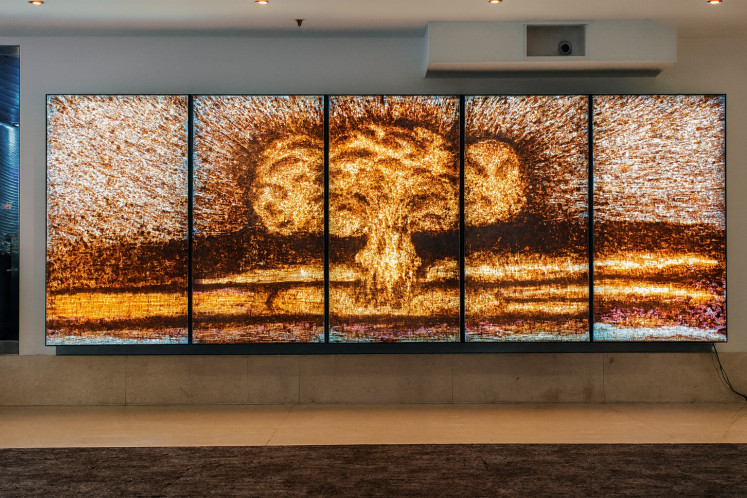Popular Reads
Top Results
Can't find what you're looking for?
View all search resultsPopular Reads
Top Results
Can't find what you're looking for?
View all search resultsGalaxy 'mega-merger' 10 billion years ago forged Milky Way
The Milky Way's signature halo is mostly stellar rubble from a cosmic collision 10 billion years ago with another galaxy a quarter of its size.
Change text size
Gift Premium Articles
to Anyone
T
he Milky Way's signature halo is mostly stellar rubble from a cosmic collision 10 billion years ago with another galaxy a quarter of its size, scientists stunned by their own discovery reported Wednesday.
The slow-motion crash with Gaia-Enceladus -- named after the giant of Greek mythology born of Earth and Sky -- not only provided the halo's raw material, equivalent to 600 million Suns, it also filled out our galaxy's distinctive disk, they reported in the journal Nature.
"We have basically unraveled the formation of the Milky Way," lead author Amina Helmi, an astronomer at the University of Groningen's Kapteyn Astronomical Institute, told AFP.
"The merger led to what we now call the halo of our galaxy, and -- because it was so massive -- to the puffing up of the disk that was already present at the time."
"We didn't expect to find that most halo stars have a shared origin," she added.
Large galaxies get that way by absorbing lesser ones.
But astronomers have long argued as to whether the Milky Way bulked up on a diet of baby star clusters, or by merging with a single Big One.
Until this year, theories from either camp were supported mostly by thin reeds of speculative inference.
But that all changed with a massive data dump in April from the Gaia satellite mission.
Put into orbit by the European Space Agency in 2013, Gaia has produced an unprecedented 3-D mapping of 1.7 billion stars, including more than a billion -- one percent of the total -- in the Milky Way.
Repeated measurements by the satellite make it possible to calculate precise distances, and the velocities with which each star is streaking through the Universe.
Read also: Astronomers find the 'impossible': A galaxy without dark matter
- Crashing galaxies on rewind -
Looking for traces of galactic mergers with the Milky Way's halo, the researchers found to their surprise that most of its stars were from the same immediate family.
"The chemical signature was clearly different from the 'native' Milky Way stars," Helmi said.
"And they are a fairly homogenous group, which indicates they share a common origin."
Adding in measurements across the light spectrum, the researchers were able to reconstruct in three dimensions the precise motions of the invading stars over time.
"Playing these videos backwards allows astronomers to study how our galaxy was assembled, and how it has evolved," noted Kim Venn, an astronomer at the University of Victoria in Canada, commenting on the study.
Helmi and colleagues calculated that the merger occurred 10 billion years ago, some 3.8 billion years after the Big Bang jump-started the Universe into existence.
The team named the galaxy that melded with the Milky Way Enceladus -- progeny of Gaia, goddess of Earth, and Uranus, god of the sky -- because the giant was said to have caused earthquakes after being buried under Mount Etna, much in the way the rogue galaxy unsettled and resculpted the Milky Way.
The Gaia satellite gathers data on 100,000 stars per minute, taking some 500 million measurements per day. Its first map was published in September 2016, based on a year's worth of observations of about 1.15 billion stars.
Some stars have been measured more than 70 times as the satellite -- circling the Sun as it orbits Earth -- continuously scans the galaxy.











